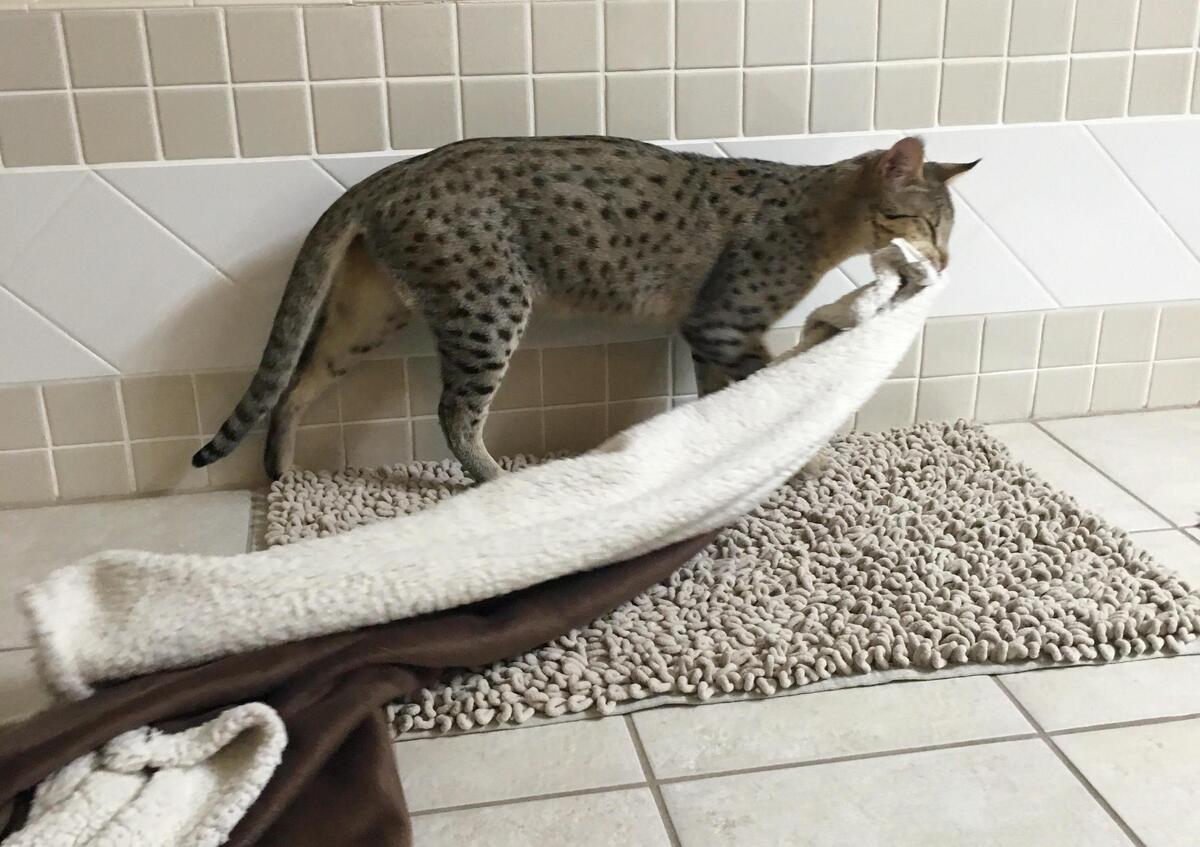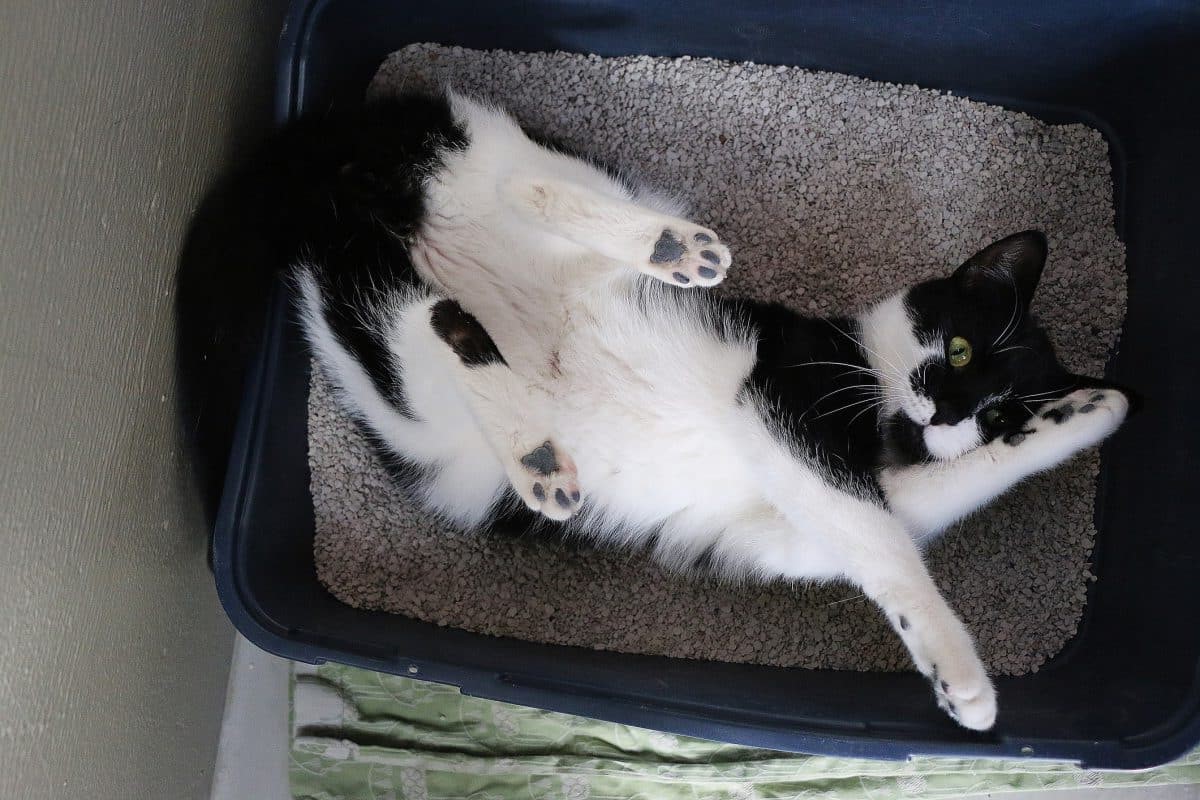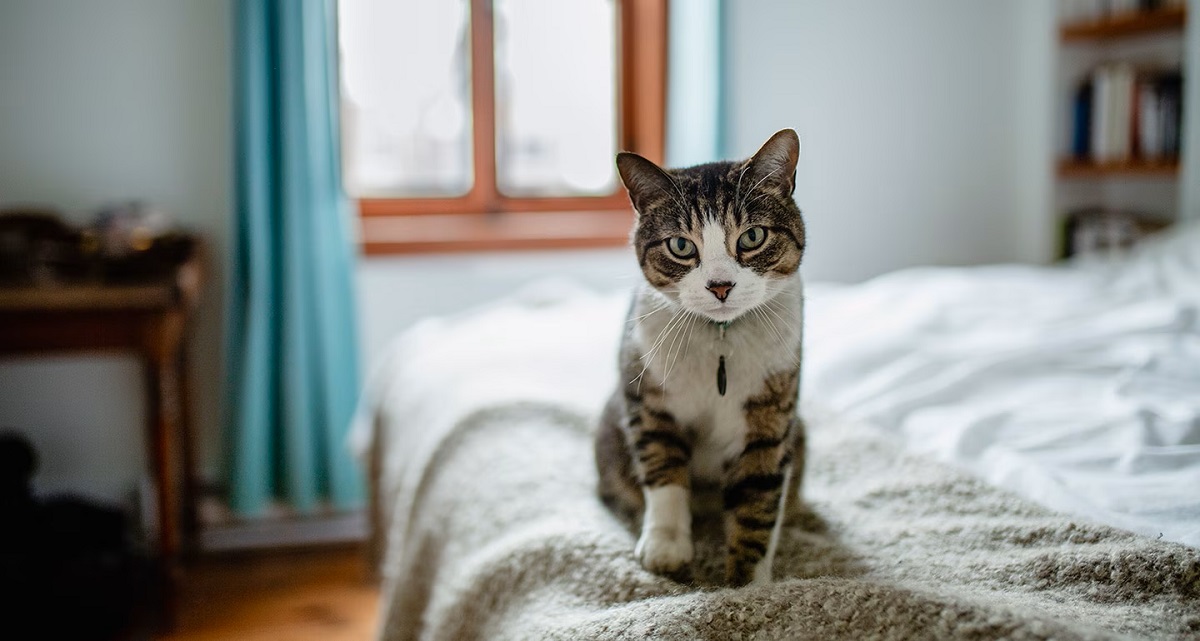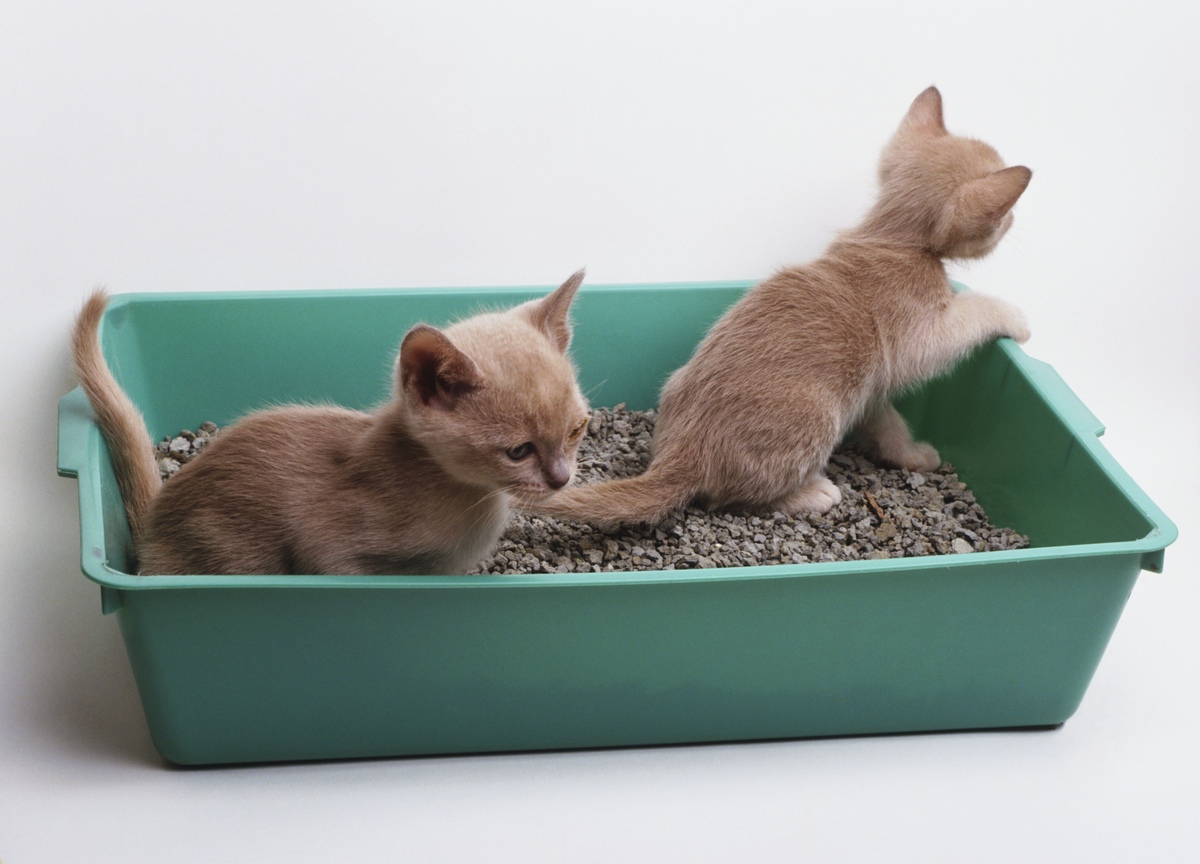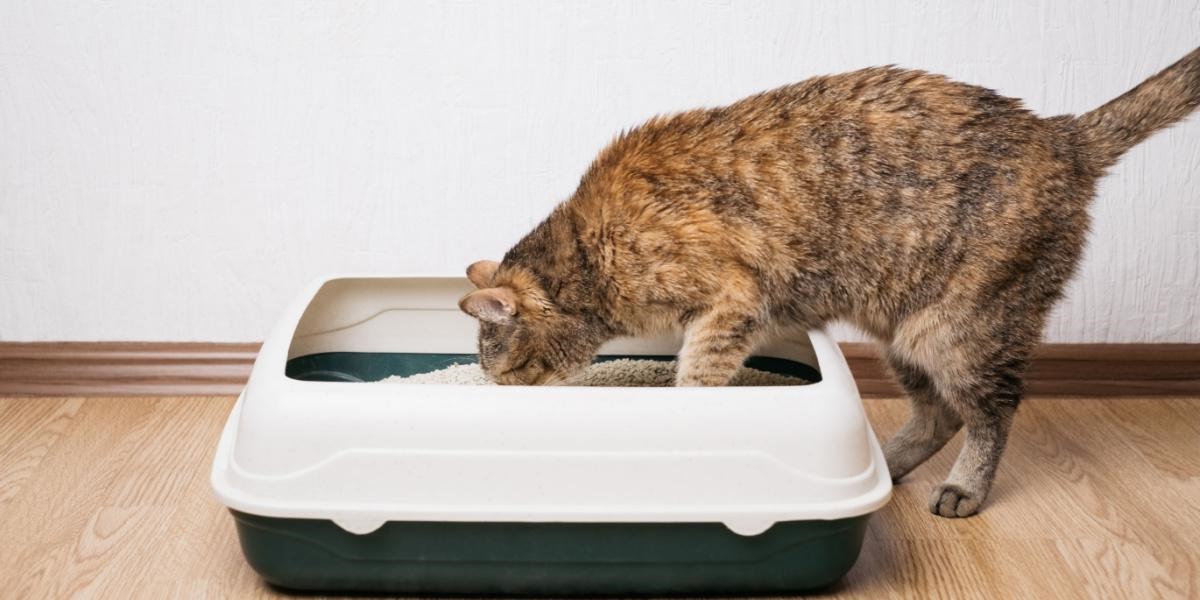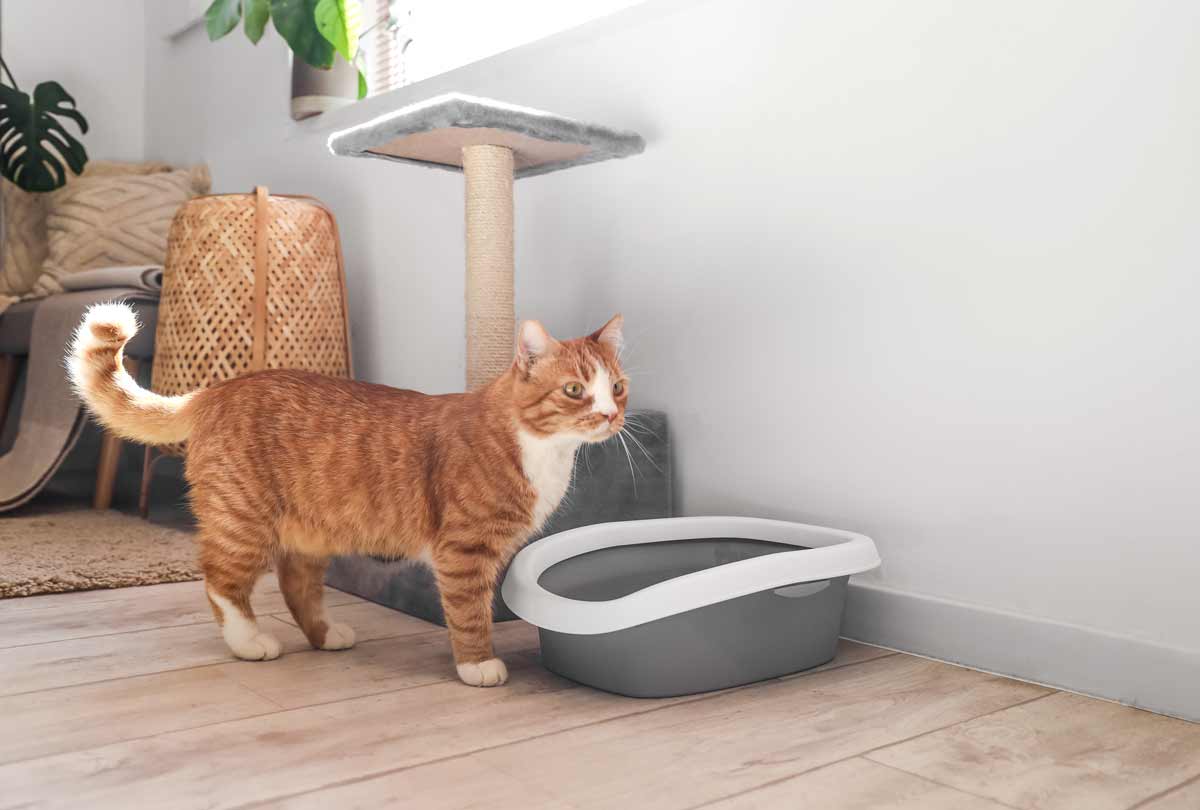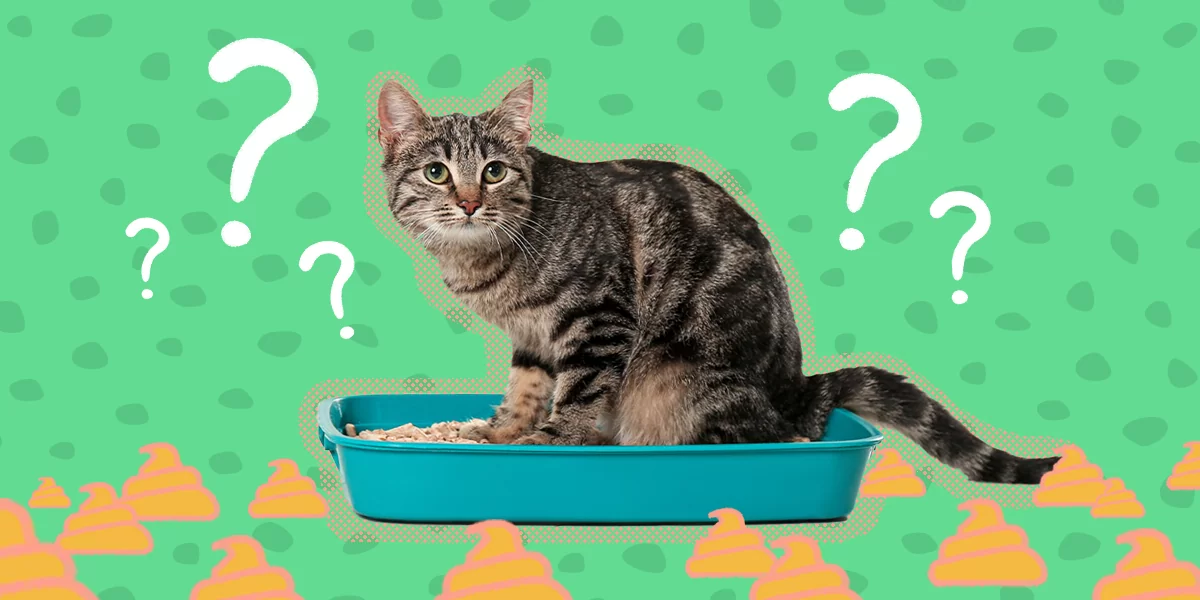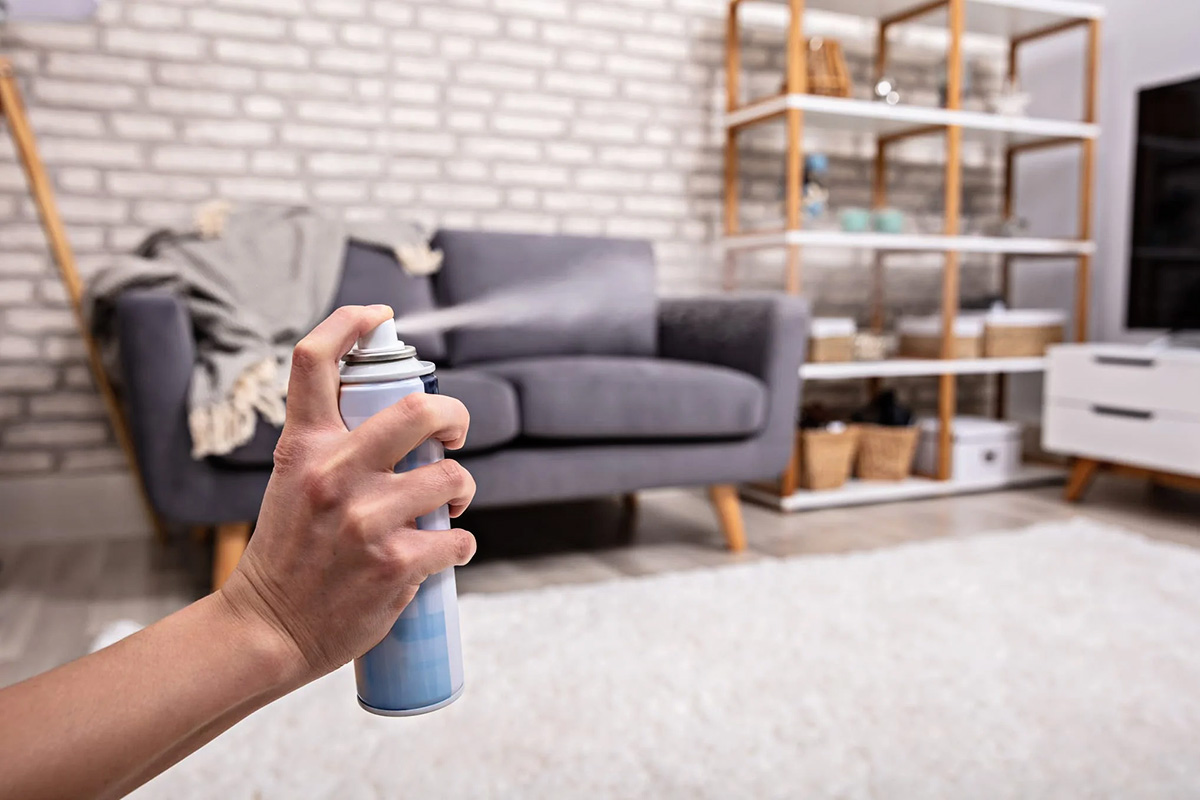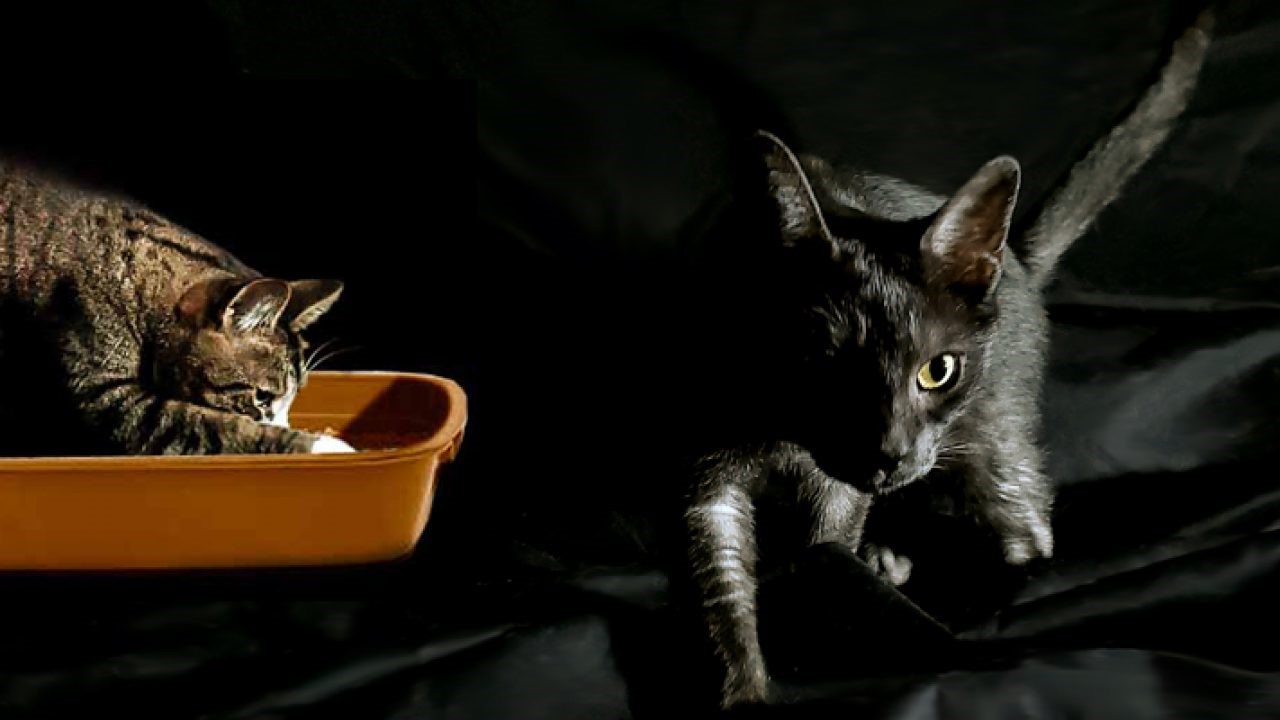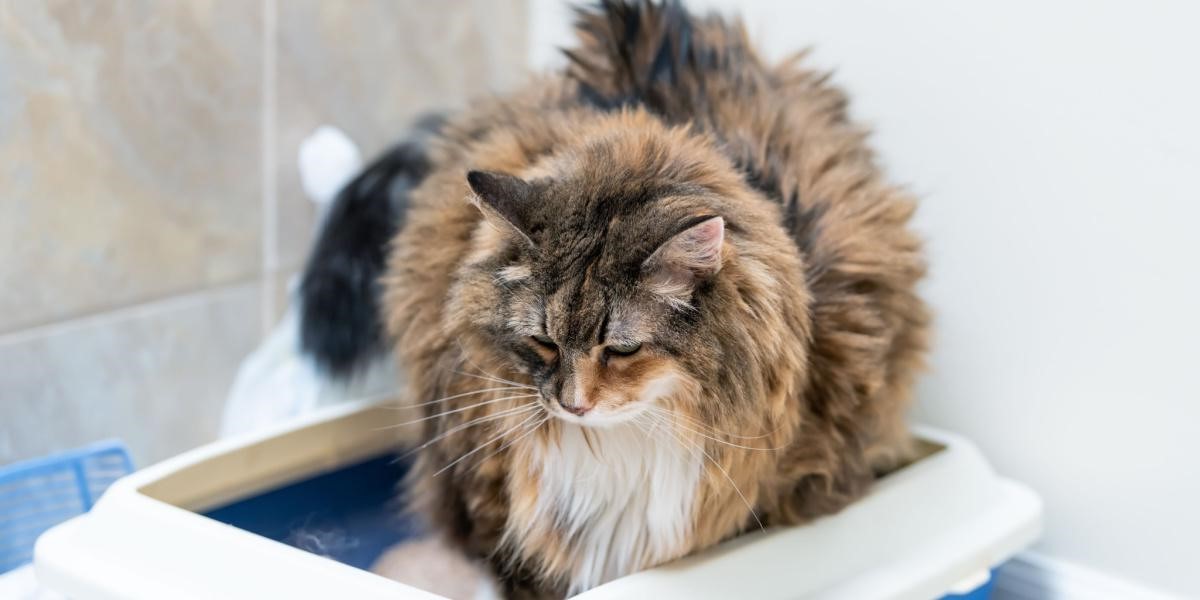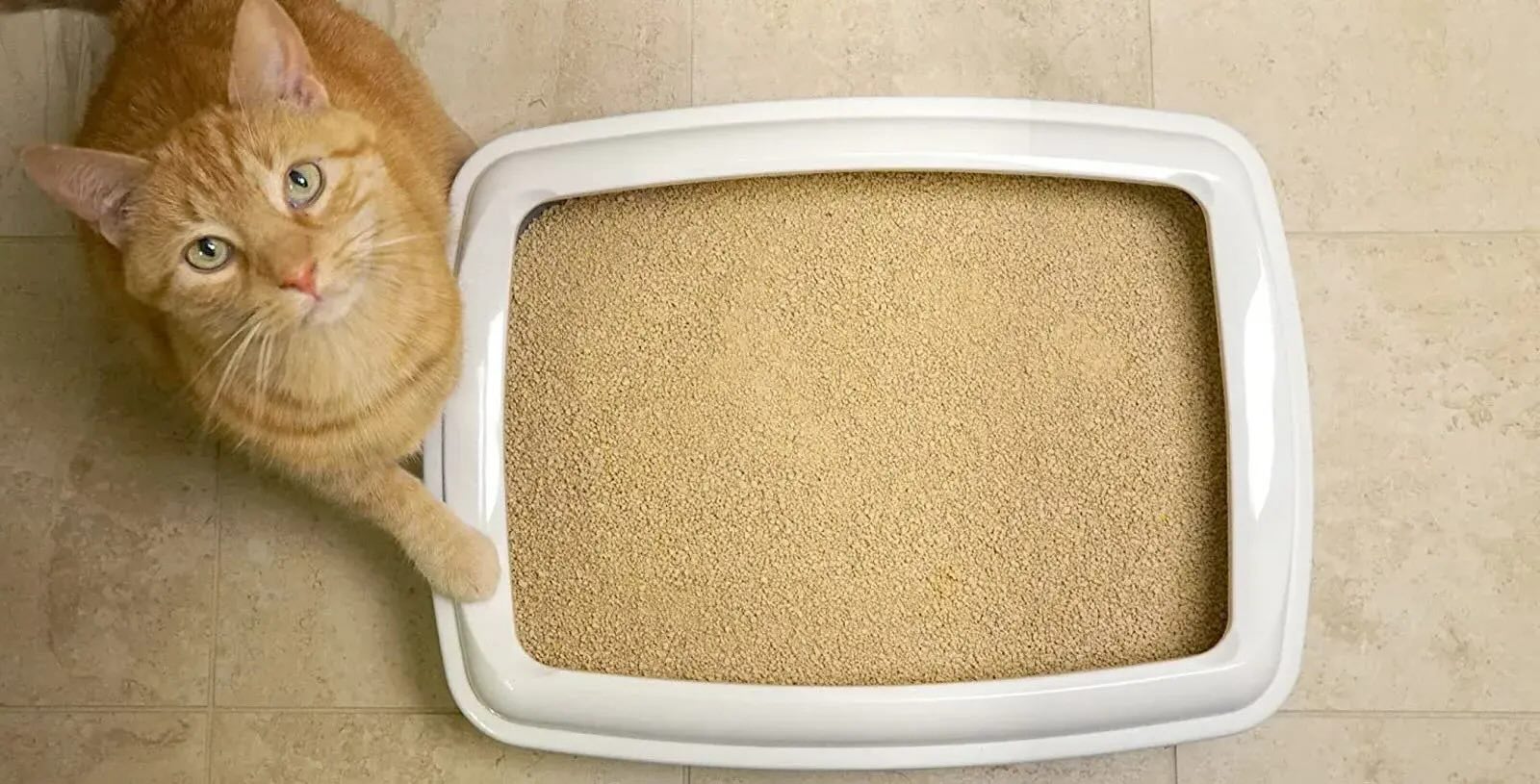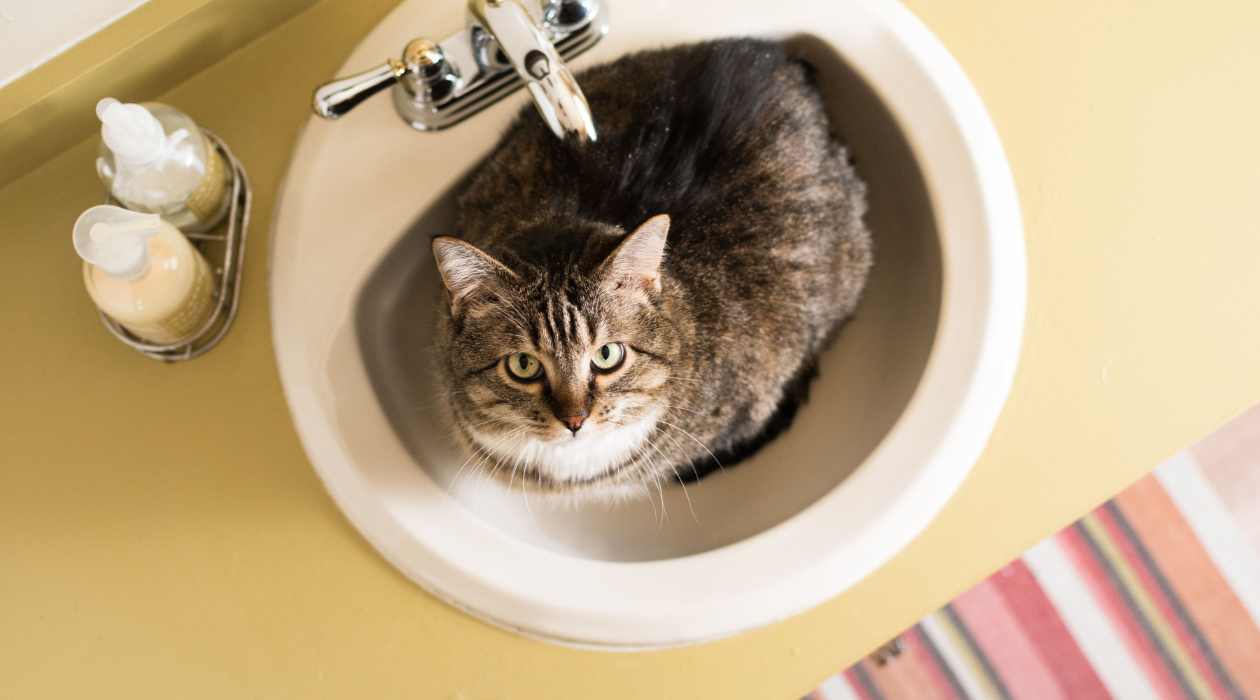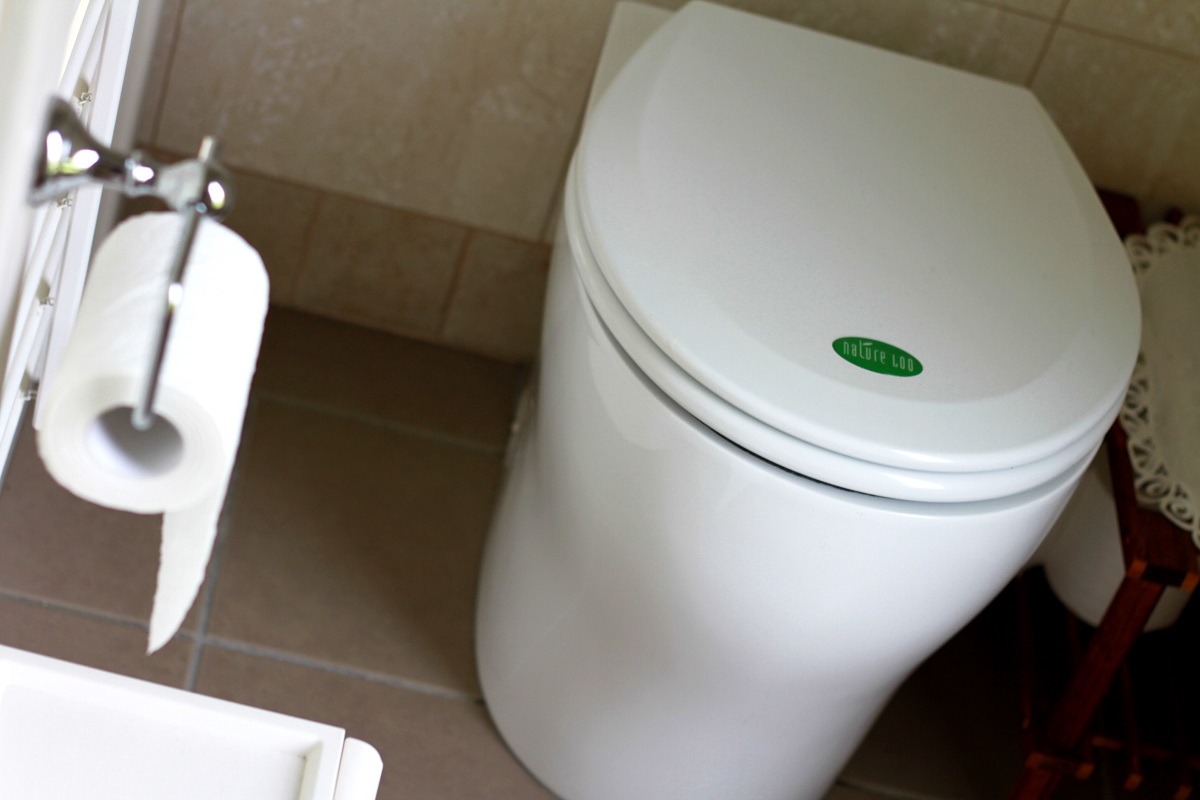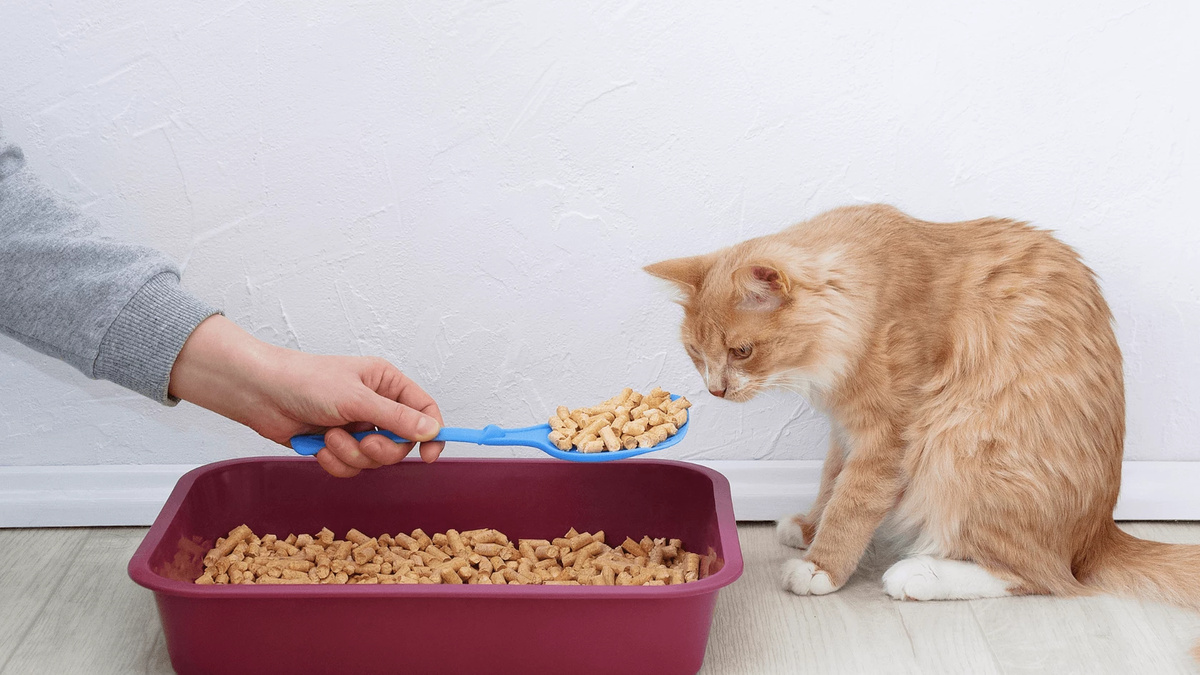Home>Articles>Why Does My Cat Drag Her Bum On The Carpet After Pooping
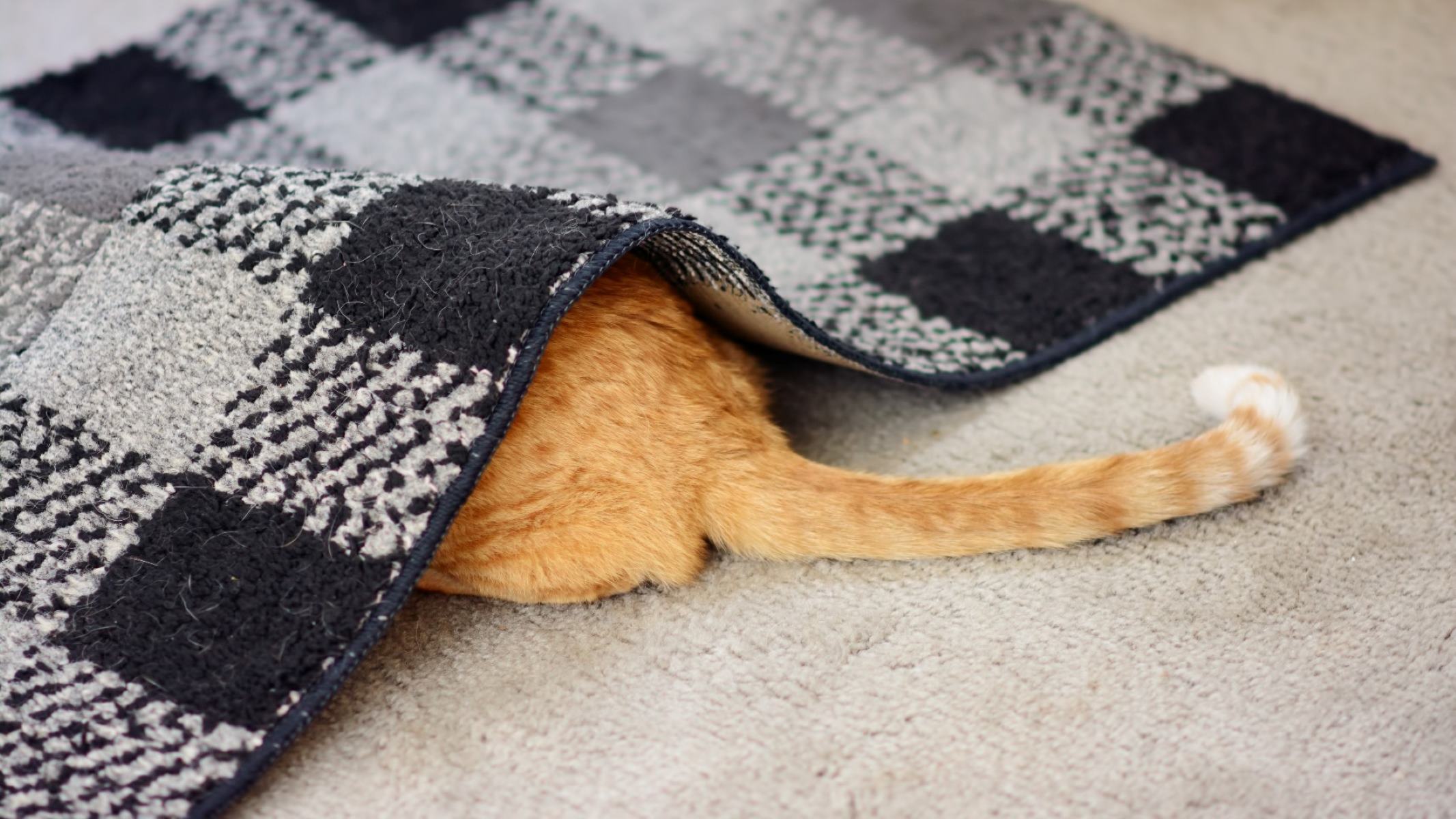

Articles
Why Does My Cat Drag Her Bum On The Carpet After Pooping
Modified: August 17, 2024
Discover the odd behavior of cats dragging their bum on the carpet after pooping through our insightful articles. Gain a better understanding of why cats exhibit this behavior and learn how to address it.
(Many of the links in this article redirect to a specific reviewed product. Your purchase of these products through affiliate links helps to generate commission for Storables.com, at no extra cost. Learn more)
Introduction
Have you ever noticed your cat dragging her bum on the carpet after using the litter box? It may seem strange or even amusing, but this behavior can actually indicate an underlying issue. Understanding why cats engage in this behavior is important for their overall health and well-being.
When a cat drags her bum, she is often trying to alleviate itching or discomfort in the anal area. While occasional bum dragging may not be cause for concern, persistent or frequent dragging should not be ignored. It could signal an underlying problem that requires attention.
In this article, we will explore the reasons why cats engage in bum dragging, including both behavioral and health-related causes. We will also discuss ways to prevent or manage this behavior to keep your feline friend happy and healthy.
Key Takeaways:
- Understanding the reasons behind your cat’s bum dragging behavior is crucial for their well-being. From natural instincts to potential health issues, being proactive and seeking veterinary advice can help keep your feline friend happy and healthy.
- If your cat engages in persistent or frequent bum dragging, displays signs of discomfort, or exhibits additional symptoms, it’s important to consult with a veterinarian. By understanding your cat’s needs and seeking appropriate medical care, you can ensure their overall comfort and well-being.
Read more: Why Does My Cat Keep Pooping On The Carpet
Understanding the Behavior
Before delving into the potential causes of bum dragging in cats, it’s important to understand the natural instincts and behaviors that may contribute to this action.
Firstly, cats have scent glands located in their anal area. These glands produce a unique scent that helps them mark their territory. By dragging their bum on surfaces, such as carpets or furniture, they are leaving behind their scent as a way of marking their territory. In the wild, this behavior is essential for establishing boundaries and communicating with other cats.
Secondly, cats are known for being meticulous groomers. They spend a significant amount of time licking themselves to keep their fur clean and free from parasites. Along with their fur, they also lick their anal area, which helps to keep it clean. However, if there is irritation or itching in that area, they may resort to dragging their bum on surfaces to alleviate discomfort.
Lastly, some cats engage in bum dragging as a form of play or to seek attention. They may find the act amusing or enjoy the response they receive from their human companions. While this behavior may not be cause for concern, it is important to distinguish it from persistent or frequent bum dragging, which might indicate an underlying issue.
Now that we have a basic understanding of the behavior, let’s explore the potential reasons why a cat may engage in bum dragging.
Possible Reasons for Bum Dragging
Cats may engage in bum dragging for a variety of reasons. It is essential to identify the underlying cause to address the issue effectively. Here are some potential reasons why your cat may be dragging her bum:
- Anal sac problems: Cats have anal sacs located on either side of their anus, which secrete a foul-smelling substance. If these sacs become impacted or infected, it can cause discomfort and irritation, leading to bum dragging.
- Constipation: When a cat is constipated, passing stool becomes challenging and painful. To alleviate the discomfort, they may resort to dragging their bum on the carpet or floor.
- External parasites: Fleas, ticks, or other external parasites can cause itching and irritation in the anal area. Bum dragging may be an attempt to alleviate the itchiness.
- Internal parasites: Intestinal parasites, such as worms, can cause discomfort and itching in the gastrointestinal tract. This may result in bum dragging as the cat tries to relieve the irritation.
- Diarrhea: When a cat has loose stools or diarrhea, it can leave residue on the fur around the anus. Bum dragging may occur as the cat tries to clean herself or remove the mess.
- Allergies: Cats can develop allergies to certain foods, environmental factors, or substances. Allergies may cause inflammation and itching in the anal area, leading to bum dragging.
- Anal fissures or infections: Tears in the skin around the anus or bacterial infections can cause pain and discomfort. Bum dragging may be an attempt to alleviate the discomfort caused by these conditions.
- Stress or anxiety: Cats can exhibit abnormal behaviors, such as bum dragging, when they are stressed or anxious. It may be a manifestation of their emotional state or a way to seek attention.
It is important to note that these are just potential reasons for bum dragging. Each cat is unique, and the cause may vary from one individual to another. If you notice your cat dragging her bum frequently or persistently, it is recommended to consult with a veterinarian to determine the underlying cause and appropriate treatment.
Health Issues that May Cause Bum Dragging
Bum dragging in cats can be a sign of various health issues. Identifying these underlying conditions is crucial for proper diagnosis and treatment. Here are some common health issues that may cause a cat to engage in bum dragging:
- Anal gland problems: Anal glands can become impacted, infected, or abscessed, leading to discomfort and irritation. Bum dragging is often a sign of anal gland issues in cats. A veterinarian can express the anal glands and provide appropriate treatment if necessary.
- Intestinal parasites: Worms, such as roundworms or tapeworms, can cause itching and irritation in the digestive tract. Bum dragging may occur as the cat tries to relieve the discomfort caused by these parasites. Deworming medications prescribed by a veterinarian can help eradicate the parasites and alleviate the symptoms.
- Urinary tract infections: In some cases, urinary tract infections can cause discomfort or pain in the genital area, leading to bum dragging. If your cat’s behavior is accompanied by frequent urination, blood in the urine, or other signs of urinary issues, it is essential to consult a veterinarian promptly for diagnosis and treatment.
- Inflammatory bowel disease (IBD): IBD is a condition where the digestive tract becomes inflamed, leading to various gastrointestinal symptoms. Cats with IBD may experience discomfort, diarrhea, or constipation, which can result in bum dragging. A veterinarian can provide a proper diagnosis and recommend a management plan for IBD.
- Impacted or infected anal sacs: As mentioned earlier, impaction or infection of the anal sacs can cause discomfort and irritation, leading to bum dragging. A veterinarian can empty or treat the anal sacs as necessary to alleviate the symptoms.
- Dermatitis or skin allergies: Cats can develop allergies to certain foods, environmental allergens, or substances. Allergic reactions can cause skin inflammation and itching, including in the anal area. Identifying and avoiding the allergen, along with appropriate medical management, can help alleviate the symptoms.
- Tumors or growths: In rare cases, tumors or growths in or around the anal area can cause pain or discomfort, leading to bum dragging. A veterinarian can perform a thorough examination and recommend further tests if necessary to identify the presence of any growths.
If you notice your cat persistently or frequently dragging her bum, it is essential to seek veterinary advice for proper diagnosis and treatment. The veterinarian will conduct a physical examination, evaluate the cat’s medical history, and possibly recommend additional tests to determine the underlying health issue and provide appropriate treatment options.
Ensure your cat’s anal glands are healthy and expressing properly. If not, consult a vet to prevent discomfort and potential health issues.
How to Prevent or Manage Bum Dragging
If your cat is engaging in bum dragging, there are several steps you can take to prevent or manage this behavior. Here are some tips:
- Maintain good hygiene: Ensure that your cat’s litter box is clean and scooped regularly to prevent any irritation or infection in the anal area. Regular grooming can also help keep the fur around the anus clean, reducing the likelihood of itching or discomfort.
- Monitor your cat’s diet: A proper diet rich in fiber can help regulate your cat’s bowel movements, preventing issues like constipation. Consult with a veterinarian to determine the best diet for your cat’s specific needs.
- Regular veterinary check-ups: Schedule routine check-ups with your veterinarian to ensure your cat’s overall health. They can identify any underlying issues that may contribute to bum dragging and provide appropriate treatment or management strategies.
- Parasite prevention: Use veterinarian-recommended flea and tick preventatives to keep your cat free from external parasites. Regular deworming treatments can also help prevent or address any internal parasite infestations.
- Environmental enrichment: Provide your cat with plenty of mental and physical stimulation through interactive toys, scratching posts, and climbing structures. Engaging your cat in play and providing environmental enrichment can help reduce stress and anxiety, which may contribute to abnormal behaviors like bum dragging.
- Stress management: Minimize potential stressors in your cat’s environment. Provide a calm and secure space where your cat can retreat to if needed. Consider using pheromone diffusers or calming supplements under the guidance of a veterinarian to help reduce anxiety.
- Consult with a veterinarian: If your cat continues to engage in persistent or frequent bum dragging despite your efforts, it is important to consult with a veterinarian. They can perform a thorough examination, conduct additional tests if necessary, and tailor a treatment plan specific to your cat’s needs.
Remember, every cat is unique, and the underlying cause of bum dragging may vary from one cat to another. Working closely with your veterinarian is crucial to understanding and addressing the root cause of the behavior.
By implementing these preventive measures and seeking appropriate medical care, you can help manage or even eliminate bum dragging in your cat, promoting their overall comfort and well-being.
Read more: Why Does My Cat Poop In My Bathtub?
When to Seek Veterinary Advice
While occasional bum dragging in cats may not always be a cause for concern, there are certain situations where it is important to seek veterinary advice. Here are some indicators that it’s time to consult with a veterinarian:
- Persistent or frequent bum dragging: If your cat is constantly dragging her bum on the carpet or floor, it is a sign that something may be wrong. Ongoing or frequent bum dragging should not be ignored, as it may indicate an underlying issue that needs to be addressed.
- Visible signs of discomfort: If your cat shows signs of pain, discomfort, or distress while dragging her bum, such as vocalization, aggressive behavior, or excessive grooming in that area, it is advisable to seek veterinary attention. These signs could indicate a more serious underlying condition.
- Additional symptoms: If your cat exhibits other symptoms alongside the bum dragging, such as diarrhea, blood in the stool, changes in appetite or weight, vomiting, or lethargy, it is important to consult with a veterinarian as soon as possible. These symptoms may be indicative of a more significant health issue.
- Changes in litter box habits: If your cat’s bum dragging is accompanied by changes in litter box behavior, such as difficulty or pain while defecating, increased or decreased frequency of urination, or straining in the litter box, it may be a sign of a urinary or gastrointestinal problem. A veterinarian can assess the situation and provide appropriate treatment.
- Worsening or persistent skin irritation: If the skin around your cat’s anal area becomes red, swollen, or shows signs of infection, such as discharge or foul odor, it is essential to seek veterinary advice. These symptoms may require medical intervention to prevent further complications.
It’s important to remember that as a cat owner, you know your feline companion best. If you observe any behavior or signs that are concerning or unusual to you, it is always better to err on the side of caution and seek professional guidance from a veterinarian.
A veterinarian will perform a thorough examination, ask relevant questions about your cat’s medical history, and possibly recommend additional tests to determine the underlying cause of the bum dragging. Based on the diagnosis, they will provide appropriate treatment options and management strategies to ensure your cat’s well-being.
When in doubt, trust your instincts and reach out to a veterinarian for assistance. Early detection and intervention can often lead to more successful outcomes in managing and treating any potential health issues.
Conclusion
Bum dragging in cats may seem like a peculiar behavior, but it can indicate underlying issues that require attention. Understanding the reasons behind this behavior is crucial for the well-being of our feline friends.
In this article, we explored the various factors that contribute to bum dragging, including natural behaviors, potential reasons, and health issues that may be involved. We also discussed preventive measures and when it’s necessary to seek veterinary advice.
It’s essential to remember that each cat is unique, and the cause of bum dragging may vary. Monitoring your cat’s behavior, maintaining good hygiene, providing a balanced diet, and seeking regular veterinary check-ups are all crucial in preventing and managing this behavior.
If your cat engages in persistent or frequent bum dragging, displays signs of discomfort, or exhibits additional symptoms, it’s important to consult with a veterinarian. They have the expertise to diagnose and treat any underlying health issues that may be contributing to the behavior.
By understanding your cat’s needs, implementing preventive measures, and seeking appropriate medical care, you can help ensure your cat’s overall comfort and well-being, keeping them happy and healthy for years to come.
Frequently Asked Questions about Why Does My Cat Drag Her Bum On The Carpet After Pooping
Was this page helpful?
At Storables.com, we guarantee accurate and reliable information. Our content, validated by Expert Board Contributors, is crafted following stringent Editorial Policies. We're committed to providing you with well-researched, expert-backed insights for all your informational needs.
